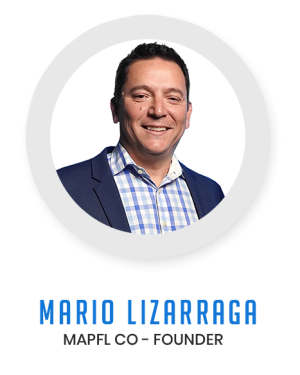Taxation Diversification
Future tax rates are unpredictable, and relying solely on taxable income could leave you vulnerable. Learn how tax diversification using permanent life insurance can protect your retirement with tax-free growth, flexible income, and long-term stability—even in a changing economy.

MAPFL BLOG
How to Protect Your Retirement from Rising Taxes
Many people prepare for retirement without considering how future tax increases could impact their income. Tax rates are unpredictable and often rise during times of war or economic instability, especially affecting middle- to high-income earners. If your retirement funds are entirely in taxable accounts like traditional 401(k)s or IRAs, you could face significant tax burdens later in life. That’s why tax diversification is just as crucial as investment diversification, it helps protect your income against shifting tax policies.
One powerful yet often overlooked tool for tax diversification is permanent life insurance. While it comes with some upfront fees, it offers tax-deferred growth, tax-free withdrawals through policy loans, and a tax-free death benefit. This makes it a flexible, long-term strategy for building wealth while minimizing future tax exposure. By creating a balanced income plan that includes tax-free sources like permanent life insurance, you can gain more control, stability, and peace of mind in retirement.
Get Custom Service Quote
Let's Get Connected!
Bring your health journey to life! Get a custom health plan consultation today. Let's connect and create a plan that fits your life perfectly.
Tax diversification means spreading savings across taxable, tax-deferred, and tax-free account types so you have flexibility if tax laws or your bracket change. Planners use it to hedge future-rate uncertainty and manage retirement-income taxes. U.S. Bank+1
Yes—rates have swung widely with policy and wars. For example, the top U.S. marginal rate reached 94% in 1944–45 during WWII and has changed many times since. Diversification helps you adapt rather than guess. Tax Policy Center+1
- Taxable (e.g., brokerage): dividends/capital gains taxed annually.
- Tax-deferred (e.g., traditional IRA/401(k)): taxed when withdrawn; withdrawals raise AGI.
- Tax-free (e.g., Roth IRA): qualified withdrawals are tax-free and don’t raise AGI. Internal Revenue Service+1
Properly structured life policies can provide:
- Tax-deferred cash-value growth (general rule under §72),
- Generally income-tax-free death benefit (Pub 525), and
- Access to cash via policy loans/withdrawals that aren’t income while the policy stays in force (subject to rules). Legal Information Institute+1
- If a policy becomes a Modified Endowment Contract (MEC) under §7702A, loans/withdrawals are taxed like annuities (gain first) and may trigger penalties.
- Any policy that lapses or is surrendered with a loan can create taxable gain.
- Charges and non-guaranteed elements matter; design and monitoring are essential. Legal Information Institute+1
Taxation Diversification
Main Points from the Transcript
- Unpredictable Future Tax Rates
- Tax policies are constantly changing based on government leadership and national circumstances (e.g., war, economic downturns).
- The uncertainty of future tax hikes is a real concern, especially for middle to high-income earners.
- Who Gets Hit the Hardest?
- Government tends to raise taxes on higher earners—not low-income individuals—because that’s where the revenue is.
- This makes mid- to high-income earners vulnerable if they don’t plan ahead.
- The Importance of Taxation Diversification
- Just like you diversify investments, you should also diversify tax treatment of your income.
- Relying entirely on taxable income streams can put you in a risky position when tax rates go up.
- The Role of Permanent Life Insurance
- Permanent life insurance offers tax-advantaged features (e.g., tax-deferred growth, tax-free loans/distributions, tax-free death benefit).
- Yes, there are fees involved, but they may pale in comparison to the cost of future taxes.
- Mindset Shift: Pay Fees Now to Avoid Bigger Taxes Later
- The small cost of insurance fees today could help you avoid the “biggest fee of all”—unnecessary taxes in retirement.
Suggested Expanded/Additional Points for the Blog
If the blog needs to be longer, here are ways to expand the content:
- Explain the Three Tax Buckets
- Taxable (brokerage accounts, interest, dividends)
- Tax-deferred (401k, IRA)
- Tax-free (Roth IRA, permanent life insurance)
- Historical Tax Rate Comparison
- Highlight how tax rates have fluctuated across decades to build urgency for planning.
- Real-Life Example or Case Study
- Example of someone with 100% of retirement income in taxable accounts vs. someone who balanced with tax-free options.
- Myth Busting on Life Insurance
- Tackle common misconceptions like “Life insurance is only for death benefit” or “It’s too expensive.”



